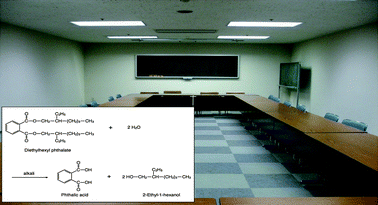Annual transition and seasonal variation of indoor air pollution levels of 2-ethyl-1-hexanol in large-scale buildings in Nagoya, Japan
Abstract
2-Ethyl-1-hexanol (2E1H) is a possible causative chemical for sick building symptoms; however, thus far, we do not have a clear understanding of the indoor air pollution levels caused by it. In this study, first, airborne 2E1H concentrations were measured during summer and winter from 2004 to 2007 in 67 rooms of 56 large-scale buildings in Nagoya, Japan, in order to show the seasonal variation of indoor air pollution levels of 2E1H. Then, a follow-up survey was conducted in five rooms of five buildings for more than 2 years in order to establish the annual transition of their 2E1H indoor air pollution levels. 2E1H was found to be one of the predominant volatile organic compounds in the indoor air of large-scale buildings. Its geometric mean concentration was significantly higher during summer (55.4 µg/m3) than during winter (13.7 µg/m3) (p < 0.01), although there was a significant difference in the concentrations among the buildings. High 2E1H concentrations may have been caused by high emission rates of 2E1H from floors, because of the hydrolysis of


 Please wait while we load your content...
Please wait while we load your content...